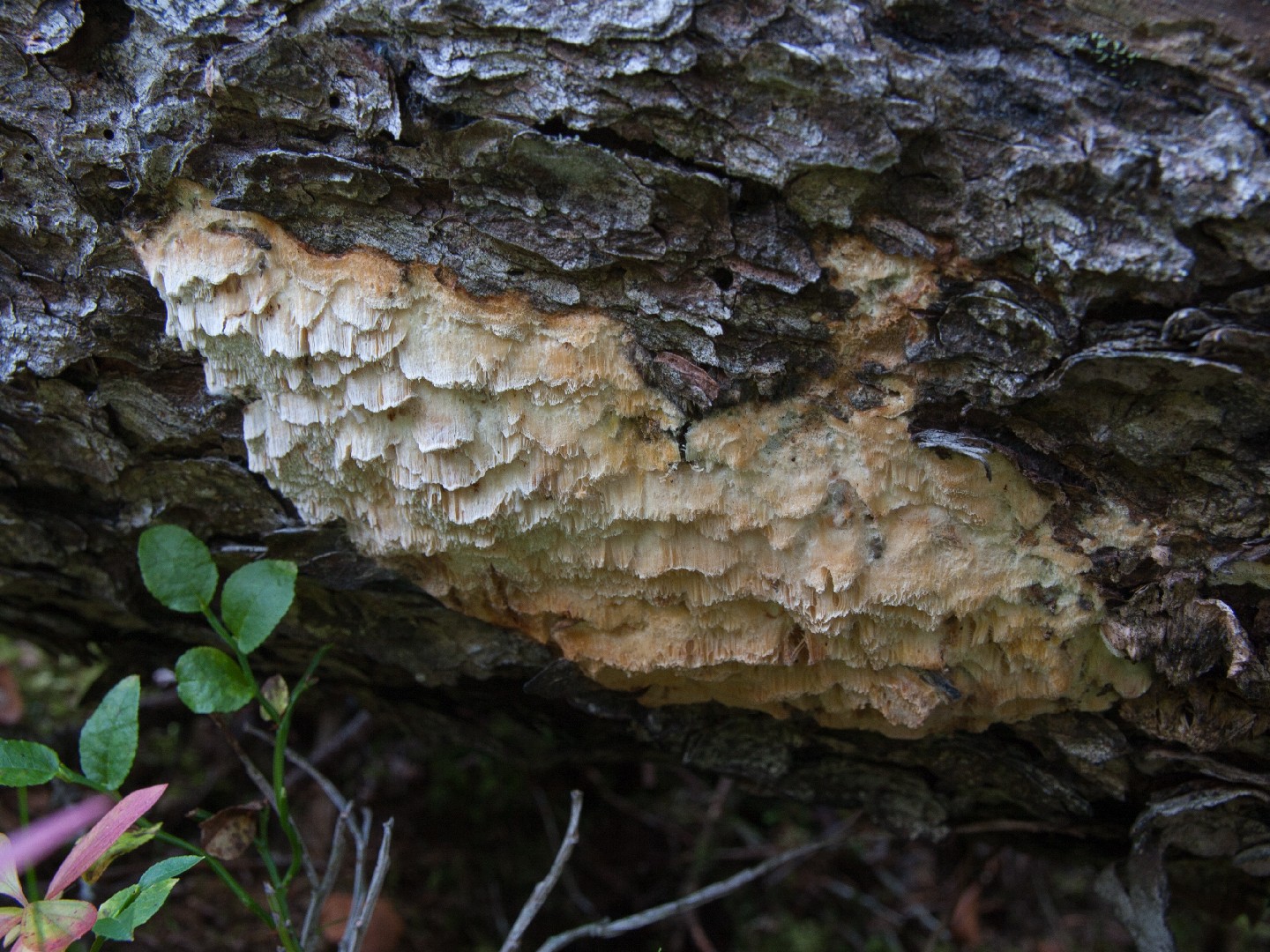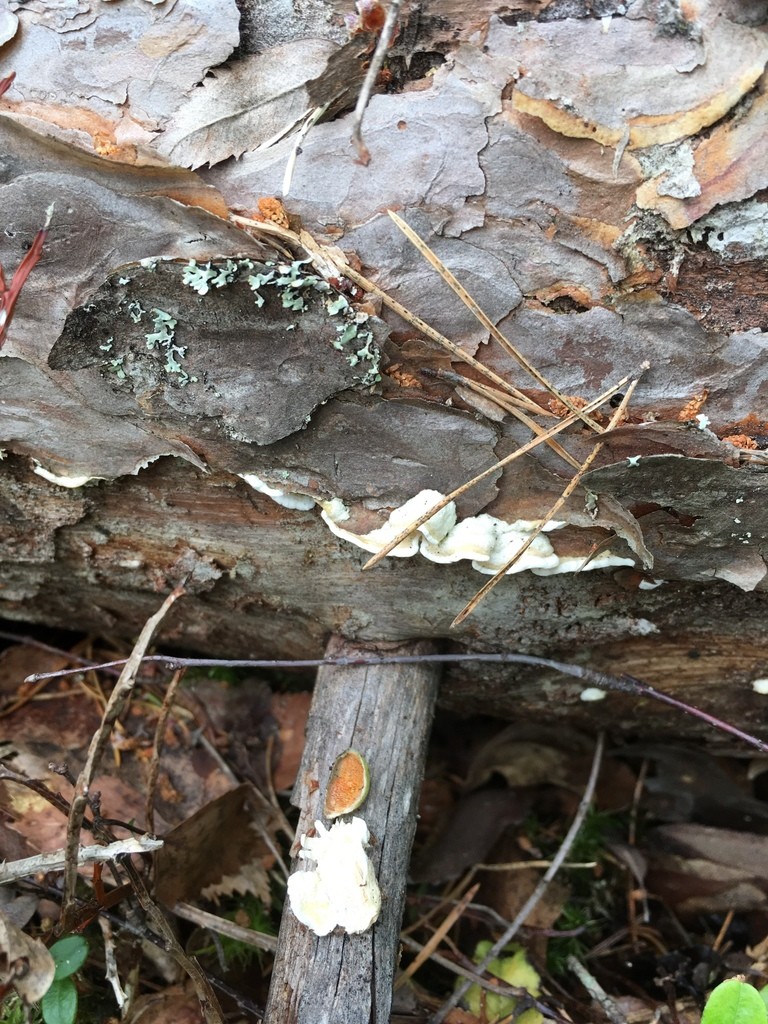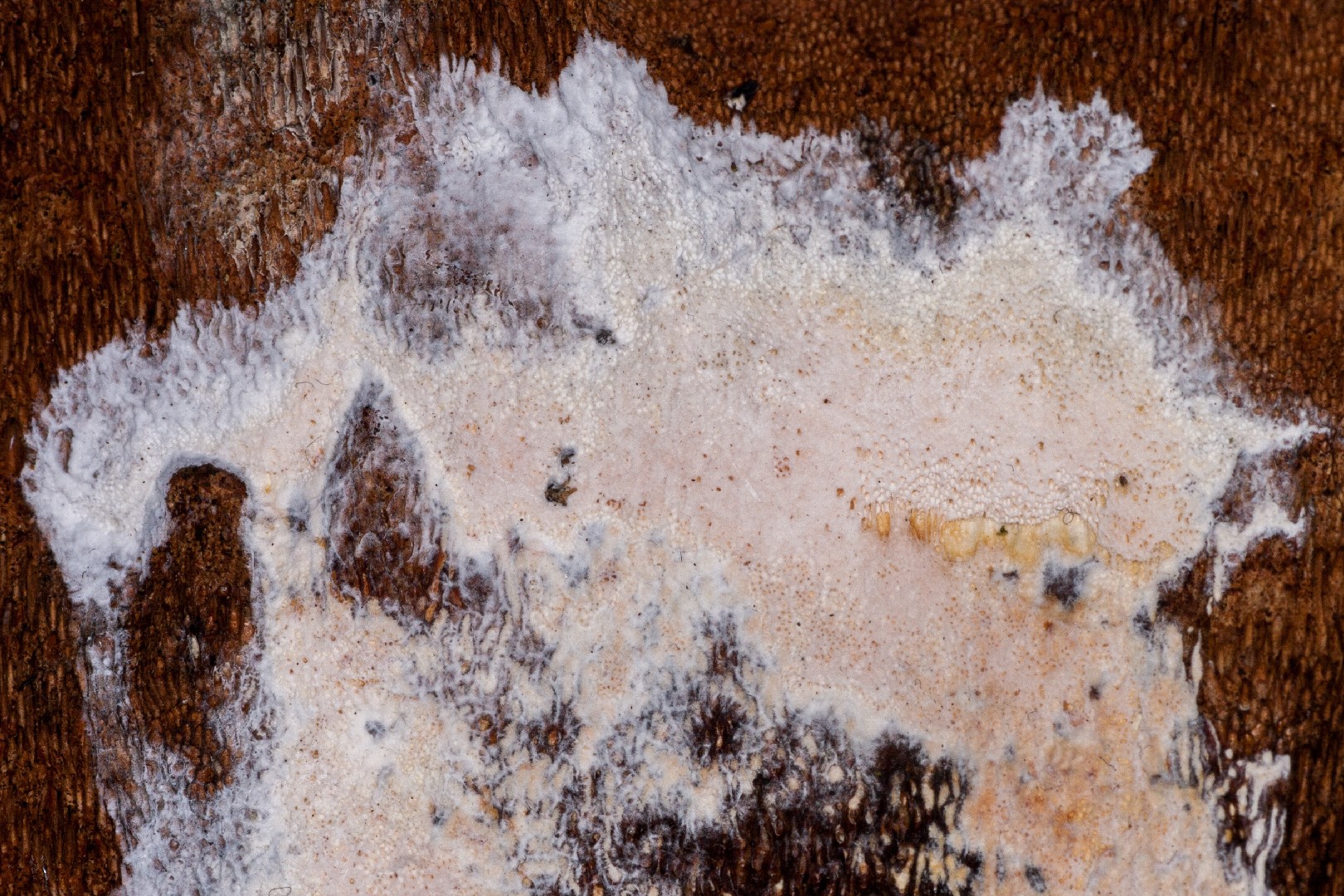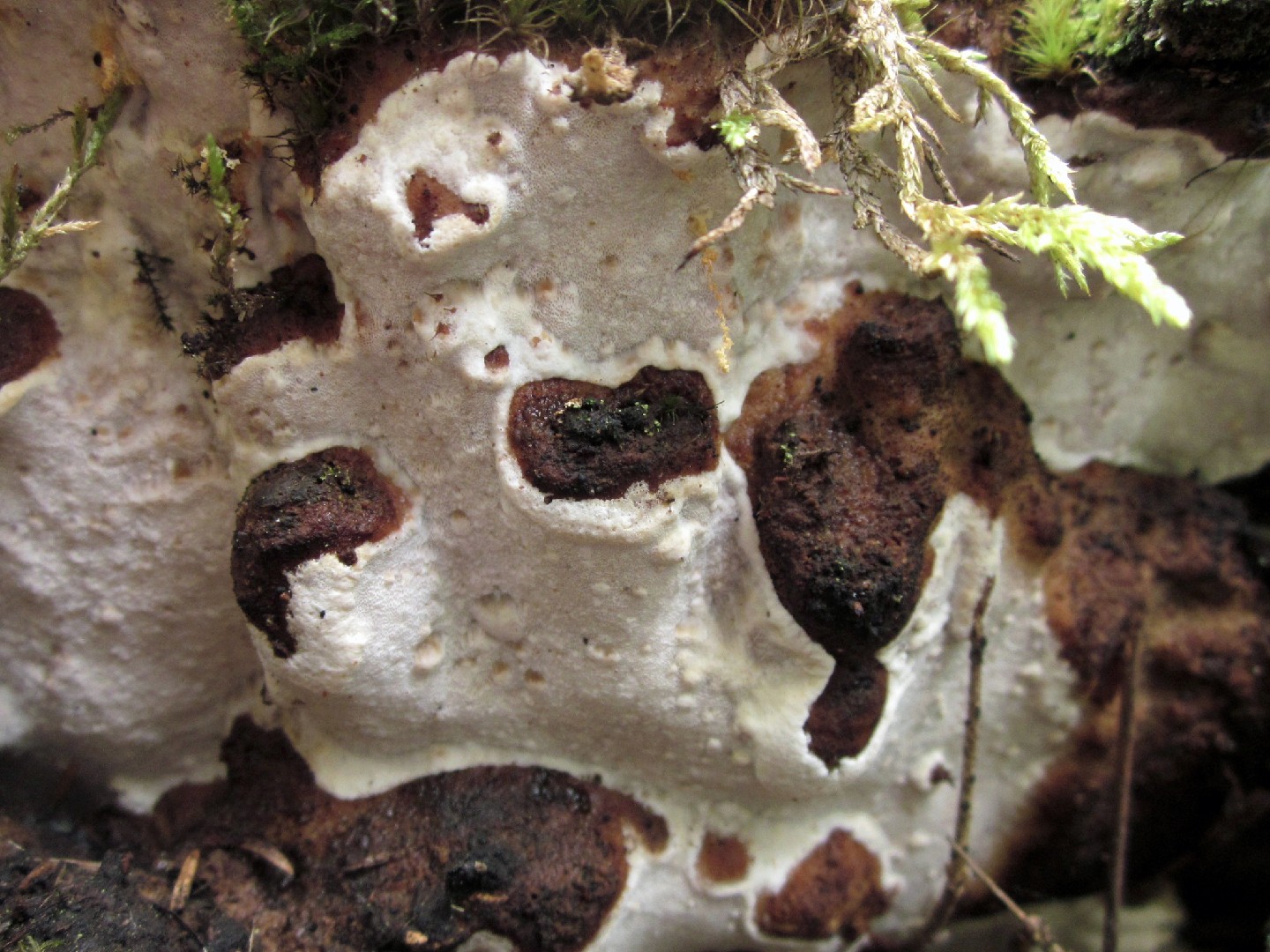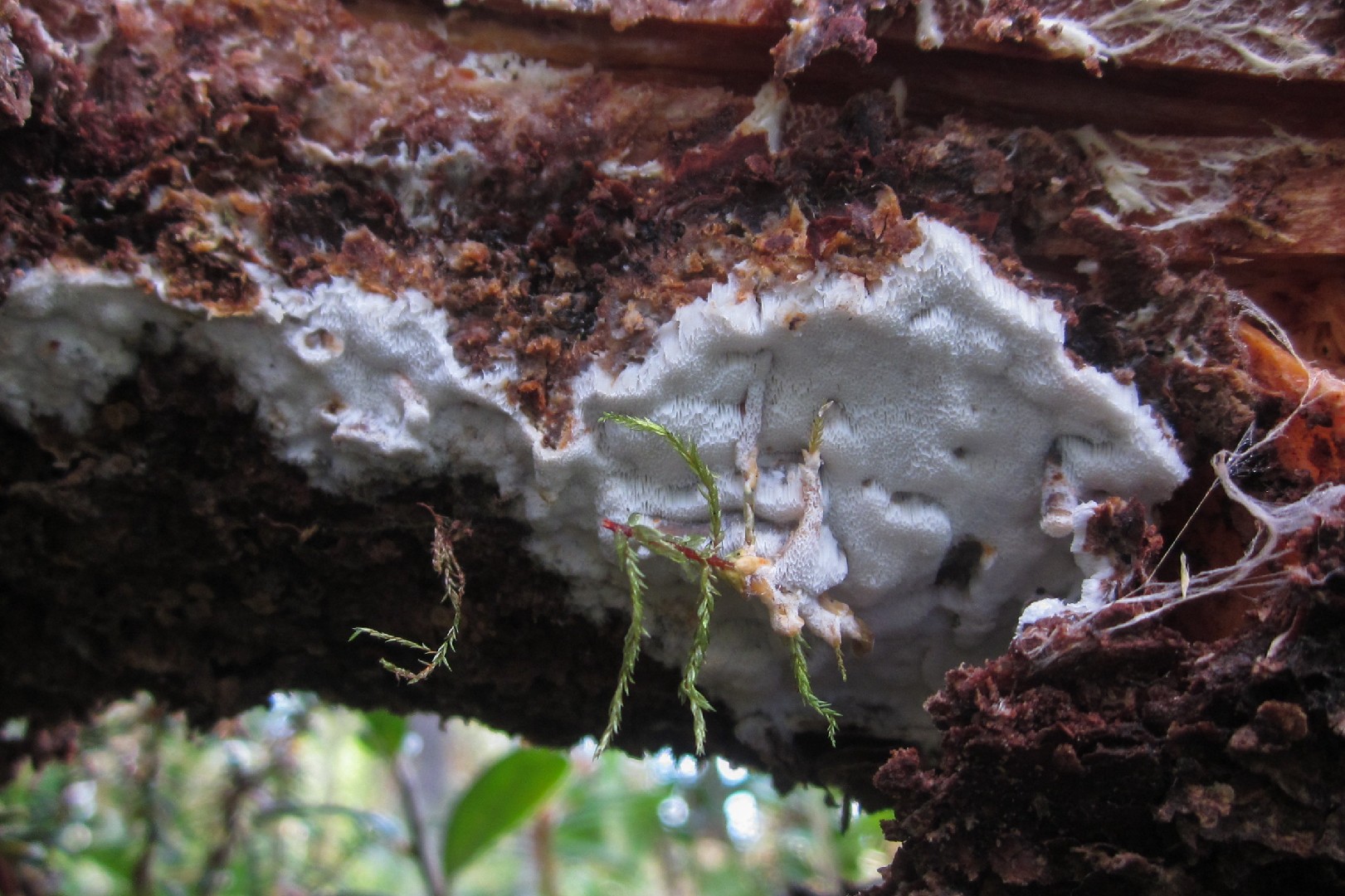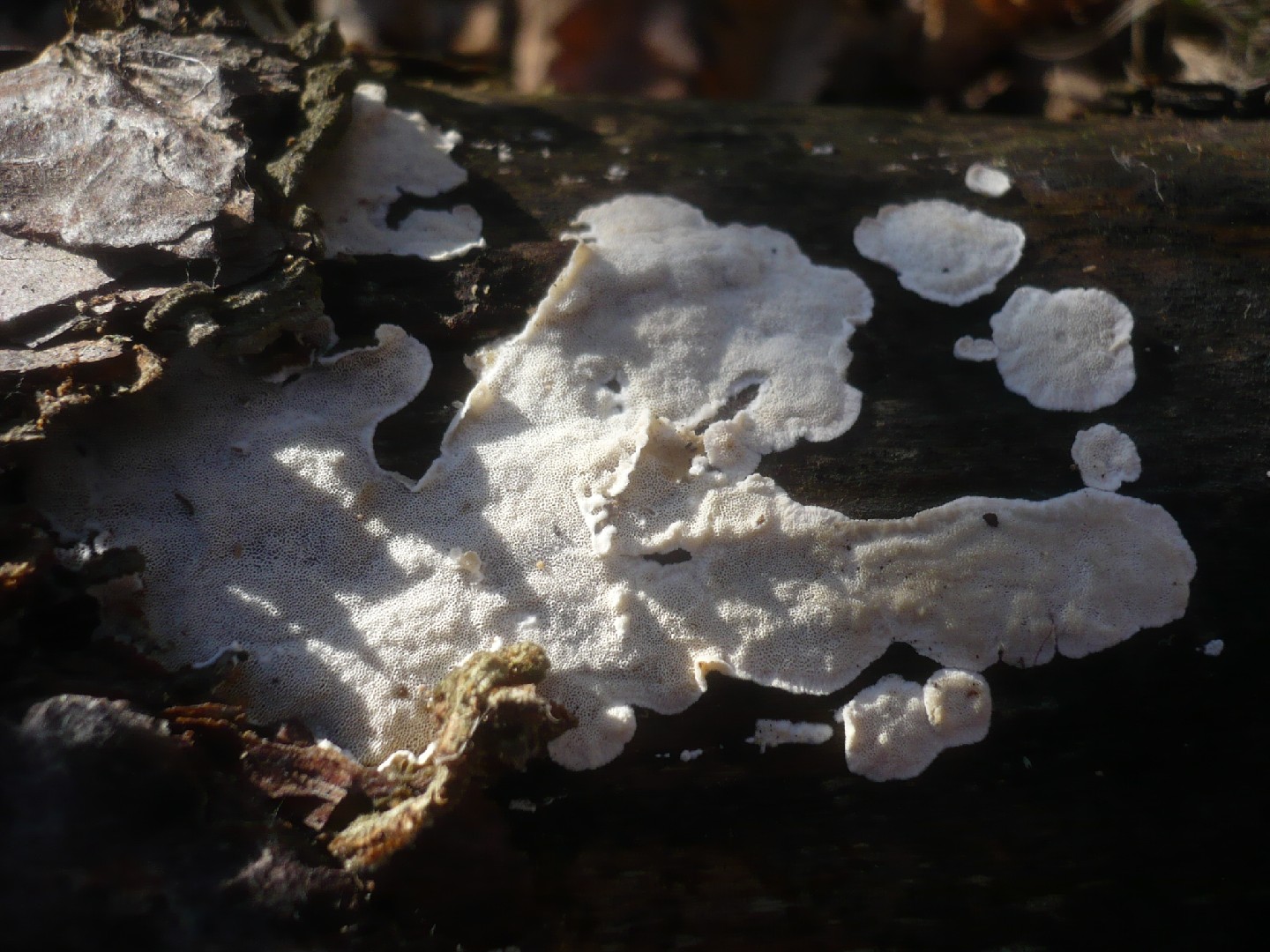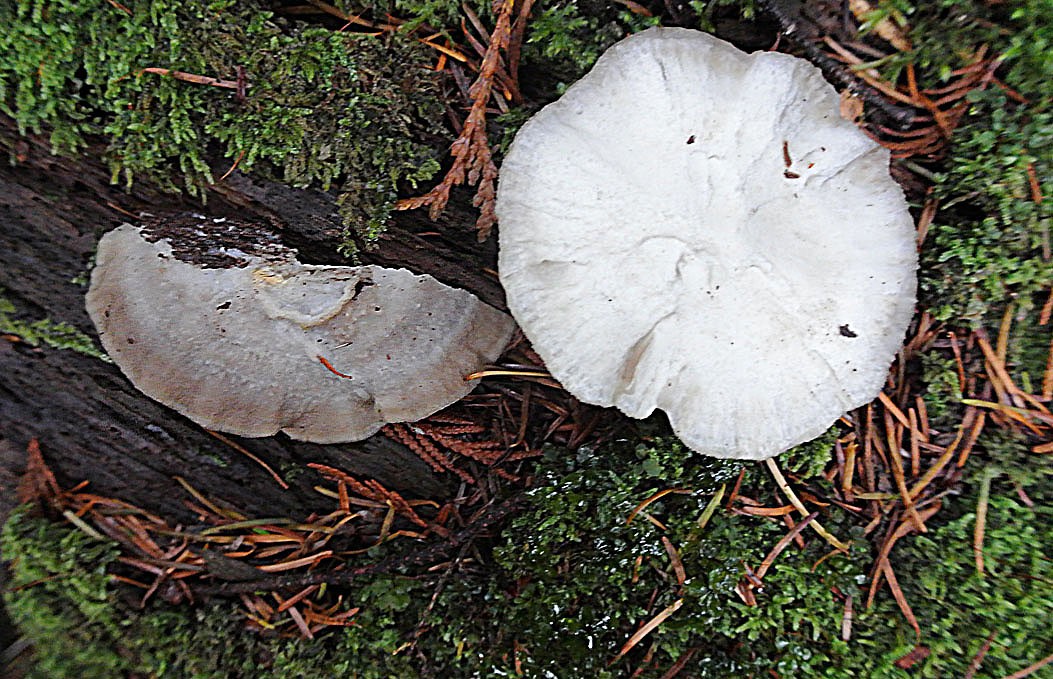Skeletocutis
Scientific name: Skeletocutis
Skeletocutis
Scientific name: Skeletocutis
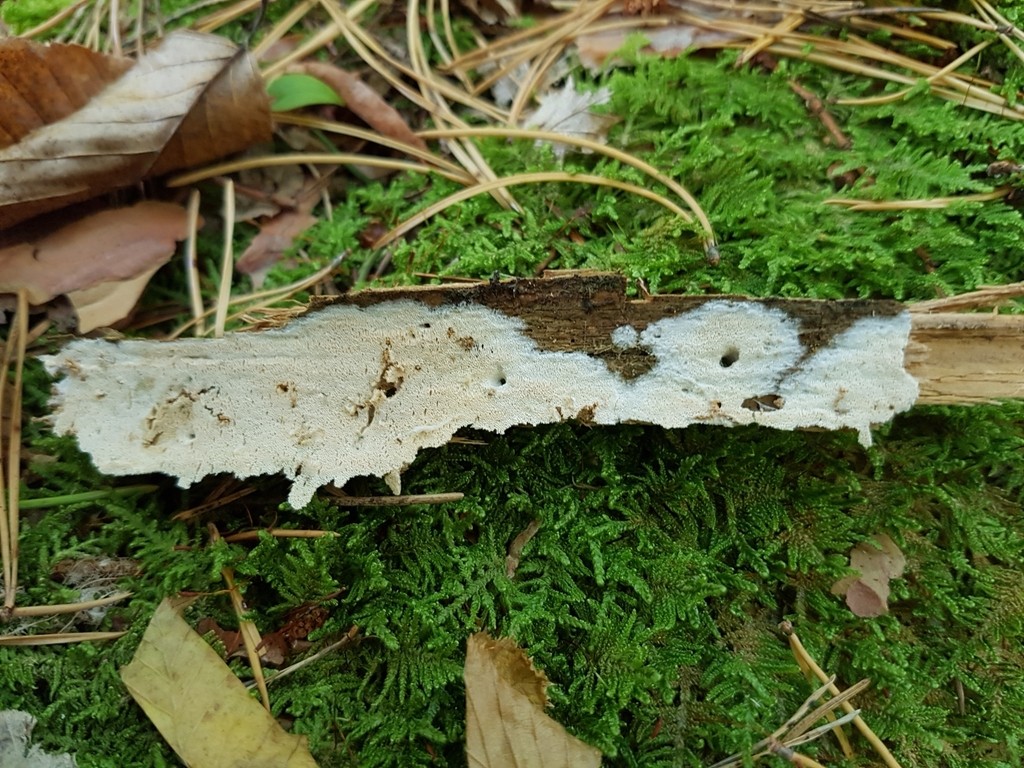 Photo By juhakinnunen , used under CC-BY-NC-4.0 /Cropped and compressed from original
Photo By juhakinnunen , used under CC-BY-NC-4.0 /Cropped and compressed from original Description
Skeletocutis are fascinating fungi typically found on decaying wood in forests. They are known for their white or cream-colored fruiting bodies, which often appear crust-like and can cover large areas. These fungi play an important role in breaking down wood, contributing to the nutrient cycle in forest ecosystems. Some species within this group can be distinguished by their unique skeletal-like hyphal structure, which gives them their name.
Species of Skeletocutis
Scientific Classification
Phylum
Club fungi Class
Mushroom-forming fungi Order
Shelf fungi Family
Polyporaceae Genus
Skeletocutis 